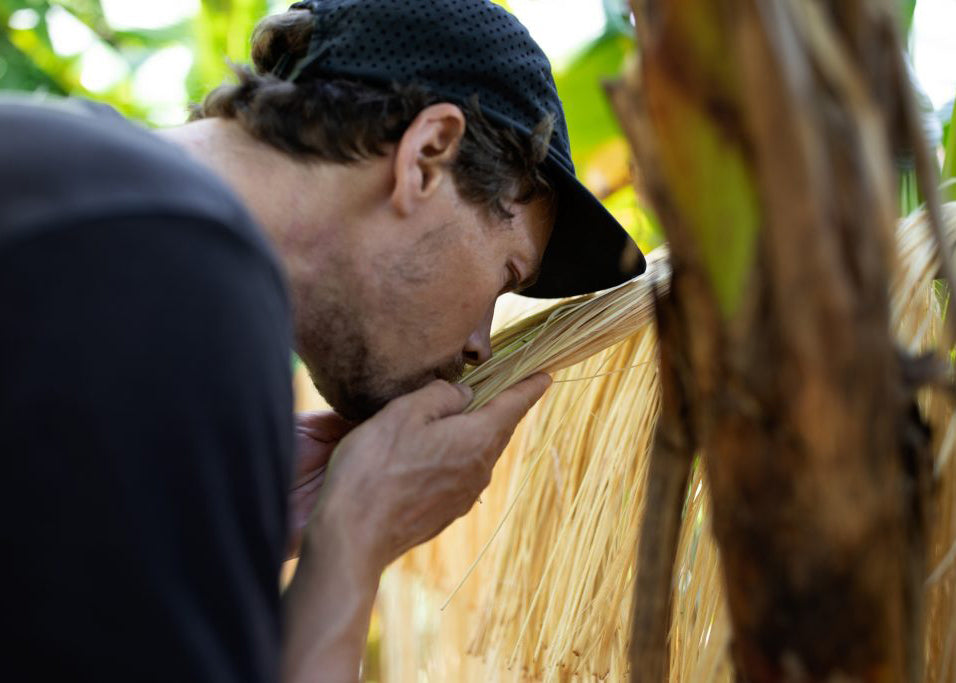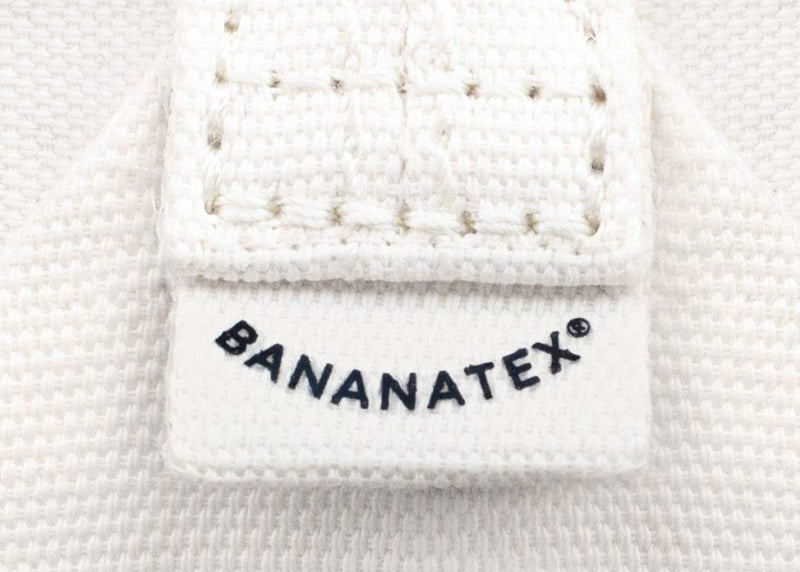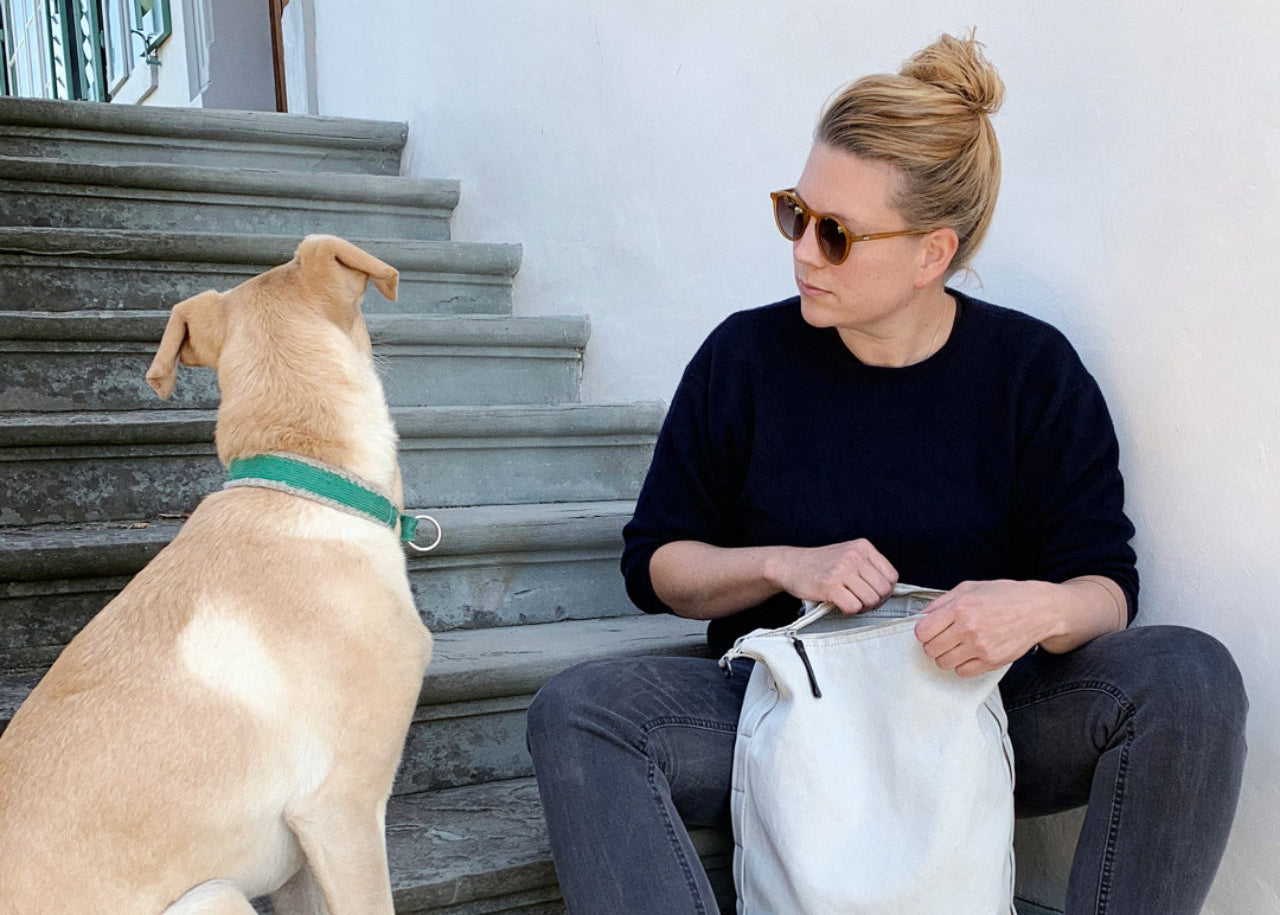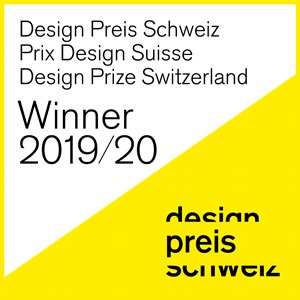BY ANNA DOROTHEA KEROne decade can go by in a flash. That’s how it feels for QWSTION ahead of their 10th birthday, at least. As the Swiss backpack brand looks back on years of experimentation, challenges and achievements, a common thread reveals itself: The impetus to question the norm. To challenge convention, to turn industry standards upside down, to ask how things could be done differently. Anna Dorothea Ker, design journalist and friend of the brand, retraces the steps behind QWSTION’s most significant accomplishment to date – a development that embodies the brand’s values of true sustainability and functional design, takes them around the globe, and sets the course for their next decade and beyond. |
 
|
TRUSTING THE PROCESSAfter years of testing natural alternatives to synthetic textiles, such as bamboo, hemp and linen, QWSTION reached their goal of using only natural, organically-grown fibres for their canvas made from 100% organic cotton – a major achievement in itself. Yet never ones to rest on their laurels, the design team kept pushing themselves further. For the past three years, their research and development has culminated in a pioneering new material made from banana plants, which forms the basis of a brand new QWSTION collection, suitably named Bananatex®. How did they get there? The journey is one that’s taken the brand from Europe to Asia and back – from design and development in their Zurich studio to the highlands of the Philippines, from a speciality paper producer in Taiwan to their longstanding production partner in Huizhou, China. All along the way, careful supply chain planning kept transport routes, and consequently, emissions low whilst harnessing the natural advantages that each location involved in the production process has to offer. |
 |
QUESTIONING SUSTAINABILITYThere’s one issue in particular that preoccupies QWSTION – the pertinent one from which all others stem. It’s the issue of sustainability: a term that’s often tokenised within the industry, but is ultimately existential in nature. We share one planet, threatened by the global warming we’ve inflicted upon ourselves, and the finity of our natural resources. Yet all too few companies and individuals seem to be prioritising the topic – as evidenced by the fact that the large majority of backpacks are still made from oil-based, environmentally harmful materials – synthetics like nylon and polyester. This current reality, and the desire to see it altered, is the driving force behind QWSTION’s experimentation with natural, organic and environmentally-friendly materials – a pursuit which has resulted in not only a breakthrough fabric, but also a brand new collection which showcases the fabric’s natural qualities. Bananatex® is the very first technical textile made purely from the fibres of Abacá banana plants, which are organically cultivated in the Philippine highlands. And it’s one which holds the potential to revolutionise the future of functional, durable textiles. Grown within a natural ecosystem of sustainable mixed agriculture and forestry, Abacá is sturdy and self-sufficient, requiring no pesticides or extra water. These qualities have allowed it to contribute to reforestation in areas of former Philippine jungle eroded by soil damage due to monocultural palm plantations, whilst enhancing the economic prosperity of its farmers. "[Abacá’s] potential as the next step in our sustainability mission was immediately apparent," says Christian Paul Kaegi, Co-founder and Creative Director of QWSTION. Alongside its contribution to reforestation and self-sustaining nature, Abacá produces fibres that are long, strong, buoyant and lightweight, which in the past made them ideal for creating strong ropes, and equally today makes them a perfect base to construct bags from. These qualities, paired with the organic, regenerative way in which the Abacá banana plant grows, make Bananatex® optimal in terms of both functionality and sustainability. |
 
|
DEVELOPED IN ZURICH, MADE ACROSS ASIA
For QWSTION, contributing to a better planet begins with sourcing – guided by the available expertise in different locations, whilst keeping a low environmental footprint. Design and development begins at the brand’s studio in Zurich, Switzerland, and the bags are made across Asia – a label the brand wears with transparency, responsibility and pride. |
 
|
A PLENTIFUL HARVEST CATANDUANES, PHILIPPINESRetracing Bananatex® to its point of origin in the Philippine highlands, the Abacá banana plant can be harvested up to three times a year, and takes one year to regenerate naturally. The first step is cutting the leaves of the stalk with a bamboo sickle. The cut stalks are tumbled down before their outer layers are separated from the inner ones, in order to prepare for fibre extraction. The stripped fibres are air-dried and bundled before being transported out of the forest and into the trading warehouse, where they are sorted by colour grades – lighter coloured fibres are rarer, and therefore more expensive. The fibres are then boiled and pressed into sheets which resemble cardboard. These sheets are shipped to Taiwan. |
 
|
FROM RAW MATERIAL TO HIGH TECH FABRIC TAIWAN
Once the Abacá sheets arrive in Taiwan, they are soaked in water to make the fibers malleable, then processed into a thin paper. The paper is cut into strips and twisted to create Abacá yarn – which is already at this stage incredibly strong and durable, while remaining soft, lightweight and supple. The yarn is taken to QWSTION’s dying and weaving partner, where, in the case of the All Black colourway, it is coloured using the yarn dying method. This process is more sustainable than the typical roll dying alternative, and certified to the highest standard (Oeko-Tex® Standard 100). The Natural White colourway reflects the actual color of the fibers and is not dyed. It’s the next step that finally transforms Abacá into Bananatex®. The yarn is woven into a fabric, according to the classic canvas weave at extra high density. It then receives a natural beeswax coating which makes it water-resistant. The resulting fabric has a smooth and distinctive handfeel – one which Christian describes as "the right stiffness – a papery texture, but very durable and resistant." |
  
|
IN PRODUCTION HUIZHOU, CHINA
Ready for the final stage, the fabric forms the base for the first set of products that showcase its naturally advantageous properties: QWSTION’s Bananatex® collection. Since 2010, QWSTION’s main production partner has been a small factory run by Mrs. Wan and Mr. Lai in Huizhou, China, around 120km from Hong Kong. With over 30 years' experience making bags, the experts have developed a close partnership with QWSTION, sustained by the Swiss design team’s regular visits, which foster transparency and collaboration whilst keeping standards high. Quality is further ensured through auditing by the EU initiative BSCI (Business and Social Compliance Initiative), which serves to uphold high European standards in non-EU countries. Regardless of where brands produce, quality products begin with quality production. This involves working closely with well-educated, experienced staff under fair conditions. It’s not the easiest or cheapest way, but ultimately it’s the option that leads to the highest quality – and the one that shapes a positive future for our planet. Customers too have to be honest with themselves. Ultimately, it comes down to conscious consumption – confronting ourselves with questions that will lead to informed, ethical decisions that we can stand behind. |
 
|
DESIGNING FOR FUNCTIONALITY
To complete the production loop, the design process for the bags that are manufactured in China begins at QWSTION’s Zurich studio and prototyping workshop, located right above its flagship store in the city’s Kreis 4 – once an worker’s district, now a hub of flourishing creativity. From there, the design team works to create everyday essentials constructed upon the principles of essentialist, functional design. Each step in the pattern creation and every design choice has a purpose – adding value to the product so as to optimise the experience of its wearer as well as the bag’s longevity. Informing QWSTION’s aesthetic direction is the label’s Swiss Modernist heritage, which is equally one of the driving forces behind its continual innovation and development. For the Bananatex® Collection, the design was greatly informed by the material. Making the most of Bananatex®’s inherent attributes, the patterns were designed to maximise sustainability and recyclability, leaving zero waste after cutting the individual parts. The result is a duo of bags – the Roll Pack and the Hip Pouch – which are simply constructed, practical and versatile. At the end of their eventual life cycles, they barely leave a trace: their fabric is 100% biodegradable, and their component parts – minus the thread – are recyclable. And so the circle is completed. |
 |
LOOKING FORWARD
The Bananatex® Collection is just the beginning for this breakthrough new fabric, however. QWSTION’s ultimate aim is to offer a viable alternative to the synthetic materials that currently dominate the bag industry. That’s why Bananatex® was conceived as an open source project, with the goal of encouraging other brands to use it. At this pivotal moment in QWSTION’s history, what’s the vision for Bananatex® ten years from now? "The path is our goal," says Christian. "It’s an evolutionary process, and this is one step in. We want to keep on improving and learning. So looking ahead ten years, we will hopefully see the next evolution of both material and product." Exactly what form it will take remains to be seen. But one thing is certain: if the company continues in the same visionary trajectory that has got it to where it is today, its potential for positive change is a force to be reckoned with. Throughout the evolution, one of the main questions upon which the brand was founded keeps them focused on the essential. |
 
|






